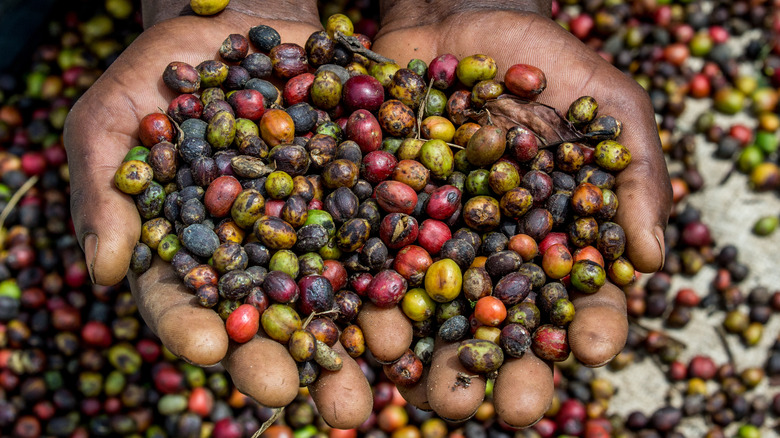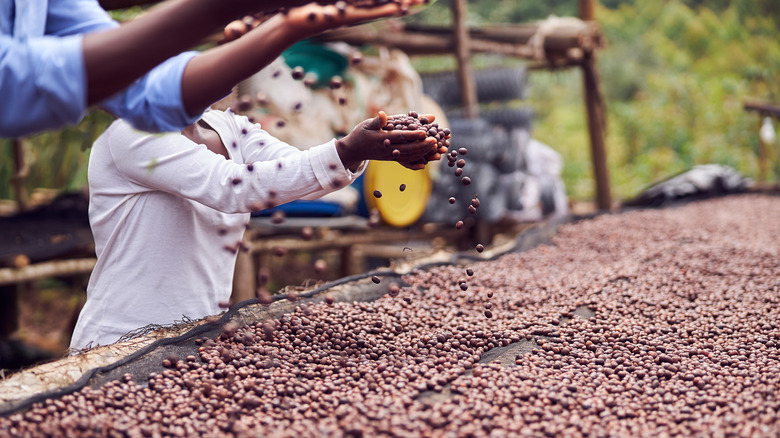Coffee Was Historically Chewed In Africa, Not Drunk
It is hard to imagine life without coffee. Whether you take it with a generous pouring of cream and sugar or you prefer it black, coffee keeps many of us alert on even the most trying of days. However, it is only within the last couple centuries that coffee has become a popular "cash crop."
While Brazil produces the most coffee in the world, according to the World Economic Forum, it can be argued that the African nations produce some of the most unique coffee beans in the world. Ethiopia, along with other West African nations such as Kenya and Tanzania, produce some of the best beans in the world, prized for their unique fruity flavors, according to Sip Coffee House. Tanzanian coffees are described as "very acidic, with a full-bodied flavor," according to World Trader Coffee. Their flavor is often detailed as "wine-like" as it has both fruity and woodsy notes. Sip Coffee House also describes the beans as having citrusy and floral notes.
In 2020, coffee exports from Africa were valued at around $2 billion, according to Statista. However, the crop has a long history on the continent, and has been influenced by colonization. For instance, originally, the first coffee beans were often chewed, rather than drunk, according to The Spruce Eats.
Coffee's African roots
Ethiopia is thought to be the "birthplace of the coffee plant and of coffee culture," according to The Spruce Eats, and coffee was likely discovered there as early as the 9th century. However, the magical energy-producing powers of coffee were first obtained by chewing the coffee beans rather than brewing them.
Centuries ago, as the outlet notes, the most common way to consume coffee was by grinding the beans and mixing them with ghee or animal fat. This mixture formed a mush that could be rolled into balls. These balls could be chewed, similar to a dip, as World Trader Coffee notes, and were perfect for sustained energy on long journeys.
While this practice was common in Ethiopia, chewing coffee was common among people in Tanzania, as well, although it occurred years later, likely the 16th century, according to World Trader Coffee. Members of the Haya tribe (an East African people native to Tanzania, as per Britannica) chewed the crop to obtain energy. At the time, only tribal chiefs of the Hayans could approve the growth of this crop since the tribe valued coffee as a form of money. However, when the German colonizers arrived, the tribal chief's control over the harvests were drastically reduced. As a result, the coffee crop was grown on a much greater scale, and with many individuals choosing to cultivate coffee as a source of income.
While coffee is widely consumed across the world today, we can thank early Ethiopians for discovering its energizing powers.

